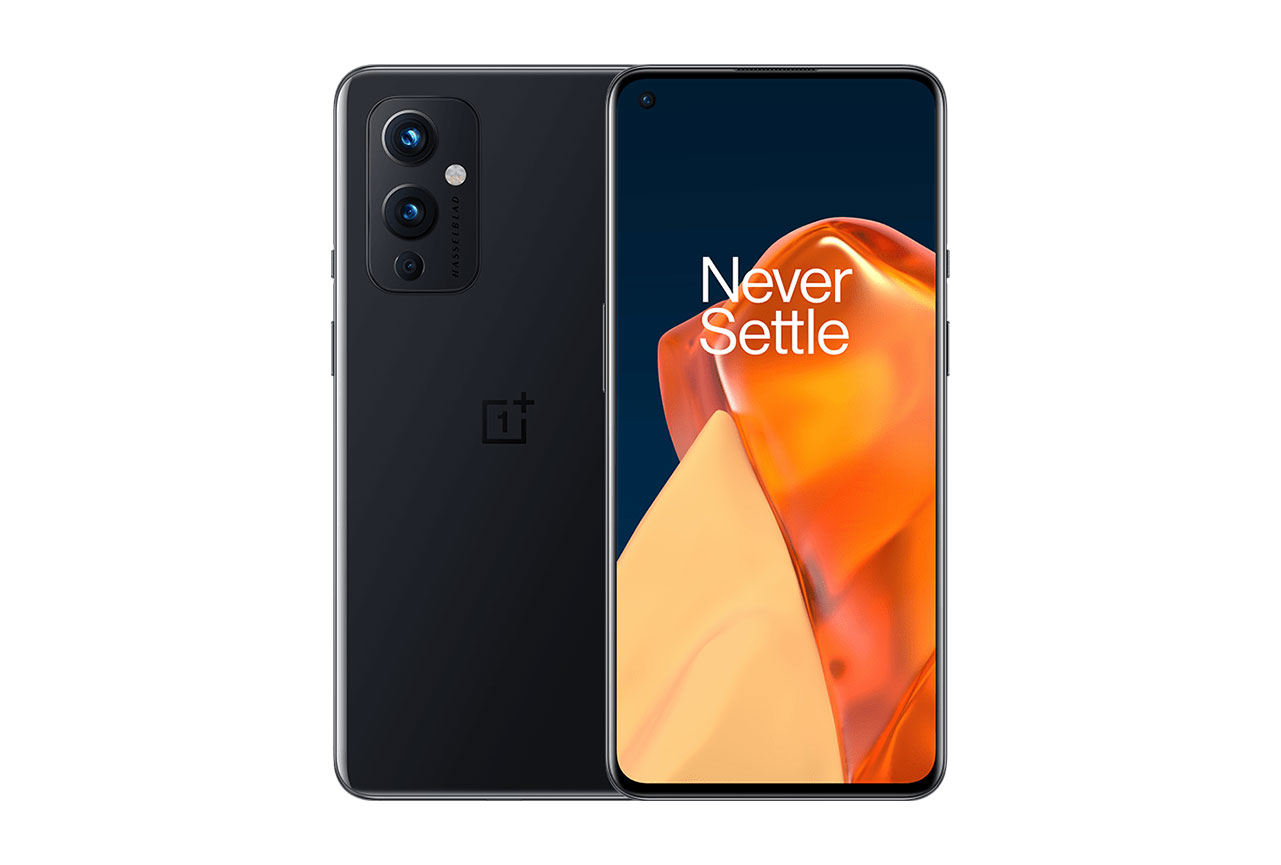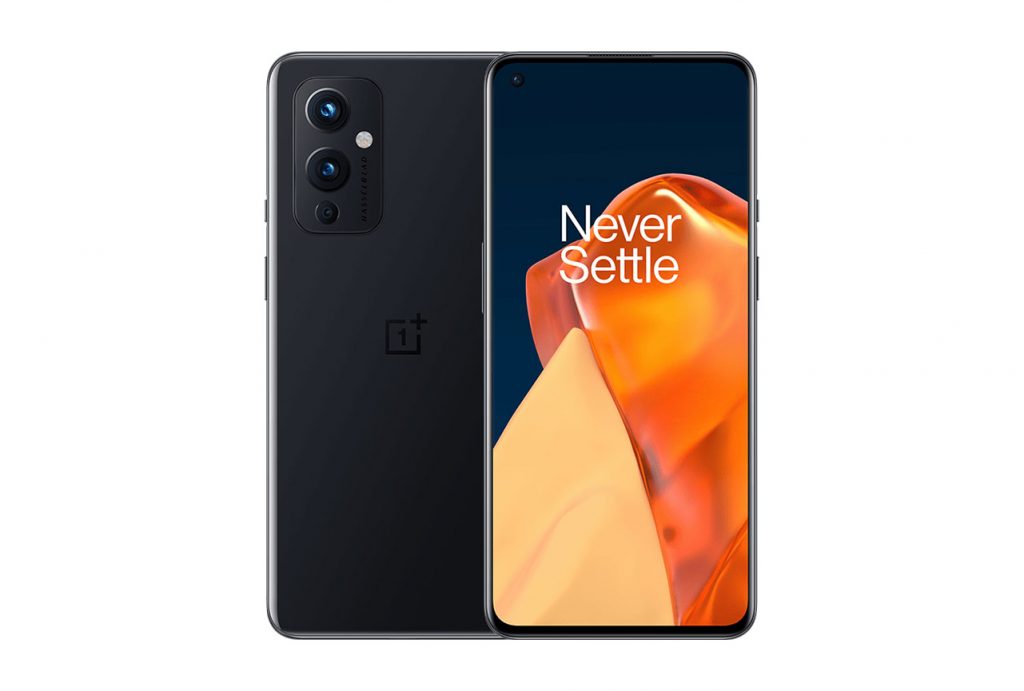The OnePlus 9, released in March, is the brand’s attempt to deliver a flagship quality smartphone with a more affordable cost. This one comes with some impressive features at the price point of between $600 and $700, which places it in our premium category. Inside, it boasts the Qualcomm Snapdragon 888 chipset, running the OxygenOS based on Android 11, and it’s set up for 5G. The display is a 6.55 inch OLED. On the audio front, it’s got stereo speakers and boasts Dolby Atmos. Let’s see how it fared in DXOMARK’s rigorous Audio testing protocol.
Audio specifications include:
- Two speakers
- Dolby Atmos
- Noise cancellation support
- Type-C port for headphone output
About DXOMARK Audio tests: For scoring and analysis in our smartphone audio reviews, DXOMARK engineers perform a variety of objective tests and undertake more than 20 hours of perceptual evaluation under controlled lab conditions. This article highlights the most important results of our testing. Note that we evaluate both Playback and Recording using only the device’s built-in hardware and default apps. (For more details about our Playback protocol, click here; for more details about our Recording protocol, click here.)
Test summary
Scoring
Sub-scores and attributes included in the calculations of the global score.

OnePlus 9


 112th
112th 30th
30thPlayback
Pros
- Precise attack, and good bass precision, despite lack of low end.
- Appreciable wideness, and correct distance perception.
- Good loudness at maximum volume and intelligibility at minimum volume
Cons
- Aggressive timbre, focused on harsh lower treble.
- Tonal balance is uneven and incomplete (lack of low end, low midrange, high end extension).
- Lack of punch, Imprecise localizability, and a lack of low-end extension
Recording
Pros
- Excellent management of signal-to-noise ratio (SNR).
- In dynamics, envelope rendition is good.
- Produces good recording loudness.
Cons
- Timbre is very muffled in Life video, and canny or resonant in selfie mode.
- In selfie mode, drastic SNR impairs envelope and induces gating
- Imprecise localizability and distance perception especially in Selfie mode.
The OnePlus 9’s overall score of 66 puts it outside the top 10 among the phones we’ve tested in the premium category. It comes slighty behind its brand forerunner, the OnePlus 8. It’s well behind the high achiever in our Audio testing protocol, the Black Shark Pro 4, which notched an 81.
In playback, the OnePlus 9 had a lack of bass and low-end extension that hindered its performance in timbre and contributed to the issues with a tonal balance that is very midrange focused. That tonal balance shows a lack of high-end as well, and our engineers described it as harsh sounding and aggressive. Regarding dynamics, the OnePlus 9 performed fairly well, with sharp and precise attack and good bass precision. The spatial score was average, and the fact that the stereo scene doesn’t rotate in inverted landscape consistently was a knock against it. In terms of volume, the device scored well, both for maximum and low volumes.

In the recording arena, the OnePlus 9 produced adequate results, but lacked the polish of some of its competitors. The tonal balance and timbre in both life video (rear cameras) and selfie video had some issues, though they were different, as you’ll see as you read on. As it was in playback, the dynamics attribute was a strong point in recording, with an above average score. Envelope rendition is good in life video mode, but less so when using the selfie video mode; it was impaired by drastic noise reduction. Signal-to-noise ratio (SNR) was very good in selfie, and decent in life video. The spatial attribute, on the other hand, was below average.
The DXOMARK Audio overall score of 66 for the OnePlus 9 is derived from its Playback and Recording scores and their respective sub-scores. In this section, we’ll take a closer look at these audio quality sub-scores and explain what they mean for the user.
Playback

Timbre
OnePlus 9
57
89
Timbre tests measure how well a phone reproduces sound across the audible tonal range and takes into account bass, midrange, treble, tonal balance, and volume dependency.
The OnePlus 9 delivers decent timbre performance with some caveats. Overall, tonal balance is very midrange-focused, lacking both bass and treble (to some extent). A lack of low midrange combined with lower treble prominence adds up to a somewhat harsh sounding timbre, even a bit aggressive, especially on sibilants and high-pitched sounds. Treble is adequate but lacks the high-end extension that would make it better.

Some resonances in the lower part of treble make it sound slightly tinny. Because of a hollow low-midrange, midrange as a whole ends up sounding thin, and not very round. Again the sounds ends up being slightly harsh. There is a significant lack of bass and low-end extension. At low volume, the device sounds slightly canny but not too harsh. At maximum volume, the treble resonances render the sound even more aggressive and tinny.

Dynamics
OnePlus 9
65
81
DXOMARK’s dynamics tests measure how well a device reproduces the energy level of a sound source, and how precisely it reproduces bass frequencies.


Sometimes the attack of the bass is too faint or the decay is too quick, but overall it’s decent. In regards to punch, the device did slightly better when playing hip-hop than with other types of music. With better low midrange energy, the performance could have been punchier.

Spatial
OnePlus 9
63
88
The sub-attributes for perceptual spatial tests include localizability, balance, distance, and wideness.
The OnePlus 9 turned in an average performance in the spatial attribute. Timbre inconsistencies result in localizability that is a bit disappointing. Sources are difficult to locate precisely.
Balance is slightly skewed toward the bottom speaker — toward the right in landscape mode. Wideness is pretty good, although the stereo scene does not rotate when landscape mode is inverted when playing music. Thankfully, it does rotate when watching video content. On another positive note, perceived distance seems commensurate to the reference.

Volume
OnePlus 9
73
91
Volume tests measure both the overall loudness a device is able to reproduce and how smoothly volume increases and decreases based on user input.


The maximum volume is good, and the device produces very good intelligibility at minimum volume. Volume consistency is also quite good, with steps being linear through the volume scale.
| Hip-Hop | Classical | |
| OnePlus 9 | 75.9 dBA | 72.4 dBA |
| OnePlus 9 Pro | 75.5 dBA | 72.4 dBA |
| OnePlus 8 | 77 dBA | 72.5 dBA |
Artifacts tests measure how much source audio is distorted when played back through a device’s speakers. Distortion can occur both because of sound processing in the device and because of the quality of the speakers.
The OnePlus 9 produced an average showing in the artifacts attribute. Our engineers observed slight compression at maximum volume, as well as bass distortion. Heavy artifacts emerged when the device played synthetic signals in our testing.
Recording

Timbre
OnePlus 9
70
91
As a recording device, the OnePlus 9 produced an average performance in timbre. Throughout the use cases when using life video (rear cameras), tonal balance overall is muffled, lacking treble and high end. Low midrange is a bit muddy and unclear, while a slight bump in the upper midrange makes the overall sound a bit nasal.
In selfie video, timbre is very midrange-focused, boxy and a bit nasal, lacking both low end and treble. In the memo/meeting use case, timbre is quite resonant, midrange focused and muffled. The OnePlus device lacks high-midrange clarity, produces a slightly muddy midrange, and sounds a bit canny. As in the life video use cases, tonal balance is quite muffled and muddy in the electronic music concert use case.

Dynamics
OnePlus 9
70
81
As it was in playback, dynamics was a strong point for the OnePlus 9, with an above-average showing. The device produced good envelope rendition, but plosives and attack could be sharper, especially in selfie video where noise reduction has an impact on envelope.

SNR is very good in selfie, although drastic background noise reduction can impair the main signal. In life video SNR is not as strong, but it functions decently. In our electronic music concert scenario (a high sound pressure level environment), the envelope is still very accurate, except at the low end, where it is not as on target.

Spatial
OnePlus 9
45
78
The spatial attribute was not a strong suit for the OnePlus 9, where it produced below average results. On the plus side, localizability is correct in life video, but it could be more precise. On the other hand, sound sources are very difficult to locate in recordings produced in selfie mode.


The stereo sound scene is not terribly wide in life video, and is mono in selfie mode. Perception of distance is impaired by lackluster timbre and the presence of multiple resonances, but seems close to correct despite those shortcomings.

Volume
OnePlus 9
59
99
As a recording device, the OnePlus 9 did fairly well in this attribute. Recording loudness was good throughout our use cases. Even in our high SPL use case, the device produced pretty good results.
Here are our test results, measured in LUFS (Loudness Unit Full Scale). As a reference, we expect loudness levels to be above -24 LUFS for recorded content:
| Meeting | Life Video | Selfie Video | Memo | |
| OnePlus 9 | -29.5 LUFS | -20.6 LUFS | -19.4 LUFS | -19.4 LUFS |
| OnePlus 9 Pro | -23.5 LUFS | -22 LUFS | -24.7 LUFS | -15.1 LUFS |
| OnePlus 8 | -25.3 LUFS | -20.5 LUFS | -17.2 LUFS | -19.9 LUFS |

Artifacts
OnePlus 9
56
97
The OnePlus 9 did not fare as well in the recording artifacts attribute, falling below average. Our engineers noted some light distortion in selfie recordings, as well as occasional heavy gating as a result of noise reduction. Gating can impair voices when they are too quiet. In the electronic concert use case, bass induced some pumping.

Background
OnePlus 9
32
60
Here the OnePlus device hit an average score. Background tonal balance is a bit muffled, and dark in life video. Strong gating induced by noise reduction in selfie impairs timbre to some degree, but it’s still decent.
Conclusion
The OnePlus 9 isn’t a standout in audio at this price point, but it’s not bad either. It achieves average or slightly above average results in most use cases and below average in only a few instances, like recording artifacts and the spatial attribute for both recording and playback. In produced roughly average scores in timbre, and did fairly well in dynamics, despite a lack of bass and low end. Volume was a strong point at both ends of the scale, with more than adequate loudness at maximum volume and good intelligibility at minimum.



DXOMARK encourages its readers to share comments on the articles. To read or post comments, Disqus cookies are required. Change your Cookies Preferences and read more about our Comment Policy.